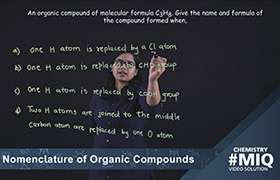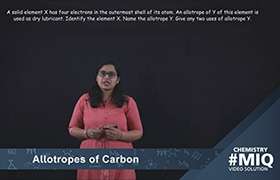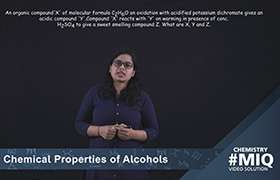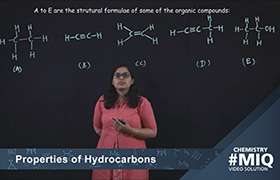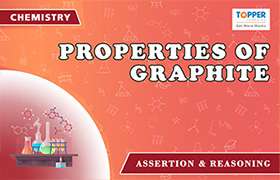CBSE Class 10 Answered
what is polar and non-polar covalent bonding?
Asked by | 12 Nov, 2012, 10:21: PM
There are two types of covalent bonding:
1. Polar bonding results with an unequal sharing of electrons. A polar bond is a type of covalent bond between two atoms or more in which electrons are shared unequally. Because of this, one end of the molecule has a slight, relative negative charge and the other a slight, relative positive charge. For example: H2O; here hydrogen has a slight positive charge and oxygen has a slight negative charge.
2. Non polar bonding results when two identical non-metals equally share electrons between them. Non polar bonds are formed by bonding between non-metals consists of two electrons shared between two atoms. For example: O2
Answered by | 19 Nov, 2012, 05:12: PM
Application Videos
Concept Videos
CBSE 10 - Chemistry
Asked by parthmarch1 | 14 Dec, 2023, 08:27: PM
CBSE 10 - Chemistry
Asked by reetritu34 | 14 Dec, 2023, 07:54: AM
CBSE 10 - Chemistry
Asked by agarwalkrishnam98 | 01 Oct, 2023, 08:28: AM
CBSE 10 - Chemistry
Asked by asra964072 | 18 May, 2022, 10:03: PM
CBSE 10 - Chemistry
Asked by jainnikhil668 | 05 May, 2022, 02:00: PM
CBSE 10 - Chemistry
Asked by gsvjairam | 17 Apr, 2022, 11:32: AM
CBSE 10 - Chemistry
Asked by shubham.sharma80634 | 10 Feb, 2022, 08:43: PM
CBSE 10 - Chemistry
Asked by Trisha Gupta | 25 Jan, 2022, 03:02: PM
CBSE 10 - Chemistry
Asked by Trisha Gupta | 25 Jan, 2022, 03:01: PM
CBSE 10 - Chemistry
Asked by sivaramaraju1000 | 21 Jan, 2022, 09:05: AM

